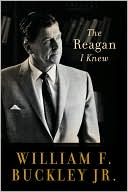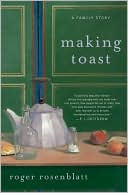The Girls in the Balcony: Women, Men, and The New York Times
The Girls in the Balcony tells the history of The New York Times' discrimination against its own female employees, and how a few brave women took the world's greatest newspaper to court.
Search in google:
"Holy crow! I thought this was a good place to work!" Arthur Ochs Sulzberger, Publisher of The New York Times.This is what the women of The New York Times were up against in the 1970s, when they began their historic fight to end discrimination at an institution that prided itself on its liberal traditions and fairness. Nan Robertson was one of the members of the Women's Caucus and in this exhilarating and angering book she recounts events that she rightly describes as "a metaphor for what working women everywhere faced." The saga of how the Caucus went up against the old boy network and prevailed will leave women readers everywhere feeling empowered to fight for parity in the workplace. Publishers Weekly That the liberal, august Times has a history of discriminating against its staff women rankles Robertson, as it will readers of this impressive, rousing dispatch fron the trenches. Photos. (May)
Author's Noteix1.The Emperor's Hall32.Mistress McCormick173.The Dark Ages414.Rosie the Reporter635.The Road to Times Square716.The Girls in the Balcony997.The Bride of The New York Times1148.The Other Shoe1329.The Suit16010.The Single Worst Moment17811.The Union Hall21312.Promises229Acknowledgments253Bibliography255Index257
\ Publishers Weekly - Publisher's Weekly\ That the liberal, august Times has a history of discriminating against its staff women rankles Robertson, as it will readers of this impressive, rousing dispatch fron the trenches. Photos. (May)\ \ \ \ \ Library JournalFormer Times staffer Robertson details the woeful status of women reporters (the title refers to the balcony where women sat in the all-male National Press Club), especially and surprisingly at the editorially liberal Times . Change occurred in the 1970s with the Times 's Women's Caucus's sex discrimination suit, ultimately settled with little back pay but at least a new hiring policy. Roberston's vivid saga provides a microcosm of the entire women's movement: there are pathbreakers who adopt men's rules; challengers who face scorn and career setbacks; and those today who don't acknowledge the crusaders' contribution. Pay inequities and chauvinistic gaffes (about which Robertson is admirably restrained) continue, and with the recent publication of the ``she asked for it'' tone of the ``little wild streak'' profile of William Kennedy\ \ \ Kirkus ReviewsWomen's struggle for equal work and equal pay at the newspaper of record is the subject of Pulitzer-winning Robertson's lively new book—a century-long tale of courage, despair, and outright mulishness told with wit, candor, and great affection. When Robertson (Getting Better, 1988) came to work at The New York Times in 1955, she was met by a sea of white male faces confidently pounding out all the news that was fit to print—at least from their point of view. For two decades, female reporters at the proudly liberal paper would devote much of their energy to breaking the barrier in the all-male city room, coaxing male reporters at the Washington bureau to lunch with them, and forcing their way onto the tiny balcony of the National Press Club to take notes while male journalists dined below with governmental bigwigs. By the late 1960's, female employees had had enough. A newly formed Women's Caucus met with publisher Arthur Sulzberger to point out the gross disparities in hiring and pay between the sexes. The all- male management responded with hurt feelings and assurances of affirmative action—but nothing happened. In 1974, six female employees filed suit against the paper, resulting in a lengthy process of depositions and a settlement that provided some back pay and the promise of reform. Still, as one Women's Caucus president has pointed out, the company's follow-up apparently has been "woefully inadequate," and despite a narrowing pay gap and diminished sexism, instances of the paper's ingrained sexual bias still seem to crop up. Nevertheless, Robertson's detailed profiles of Times employees, from Pulitzer-winning Anne O'Hare McCormick to Anna Quindlen—many of whomrisked their careers for the sake of their beliefs—make this a virtual celebration of feminism, and her fascination with what made the people in power tick enhances her insider's view. Superlative journalism—sharp, detailed, and unsparing. (Eight pages of b&w photos.)\ \








